Four Futures
What is Four Futures?
Adapted from the eponymous Peter Fraser 2016 book, Four Futures is one of our basic methods, the starting point for most of our Designing Tomorrow workshops.
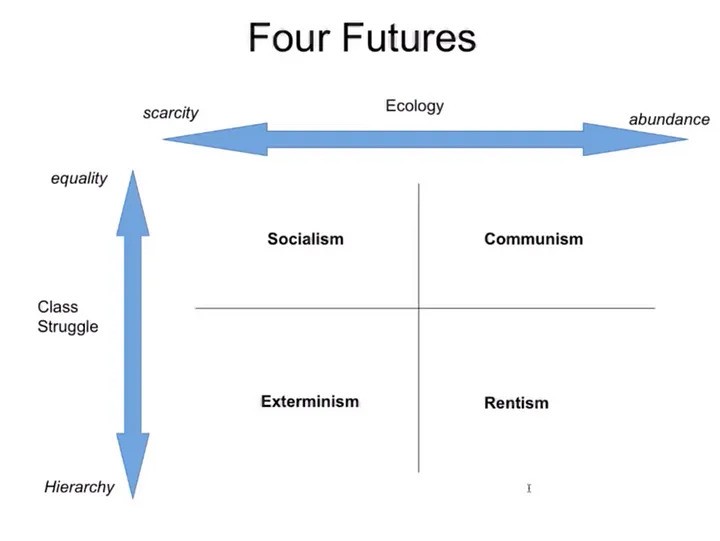
slide taken from Fraser’s presentation at the 2016 book launch
In his book, Fraser describes four extreme but possible scenarios for the future of human society after the inescapable collapse of capitalism as we currently know it. To come up with those scenarios, Fraser first describes to axes of grand shifts in global conditions: towards either a more equal or more class-divided society, and towards more plentiful or more limited material conditions.
Fraser then writes a chapter for each quadrant created by the juxtaposition of these axes, where he names the society it births and attempts at fleshing out its intricacies.
We absolutely adore the framework of the book, and decided to extract it, sans Fraser’s content, and use it in our workshops. It has since proven to be an excellent jumping board for the kind of responsible speculative thinking we aim for. Below is a description of our version of the process.
To begin this exercise we ask ourselves broad questions about the future, and when we have enough of them we try to identify those of them that have two distinct qualities:
We are truly uncertain of what the future holds for this issue.
We can roughly place the possible answers on an axis between two extremes.
Such questions and their matching axes can be, for example:
What is the future of social castes? The answers lie somewhere between equality and hierarchy.
How will the future look for societal relations? The answers could lie somewhere between solidarity and individuation.
What is the future of the tensions between Nature and Culture? The answer lies somewhere between humanity prevailing over nature, and nature prevailing over humanity.
We call these questions “Axes of Uncertainty”.
The Axes of Uncertainity
We proceed to take two of these axes and cross them, creating a matrix. In the example below we’ve created a matrix with two of the axes mentioned above:
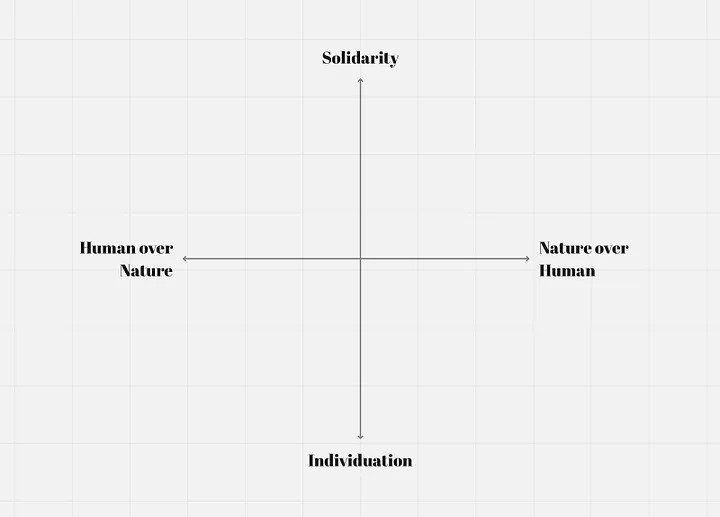
We then attempt to imagine how a future society might function in each of these quadrants, again in broad strokes:
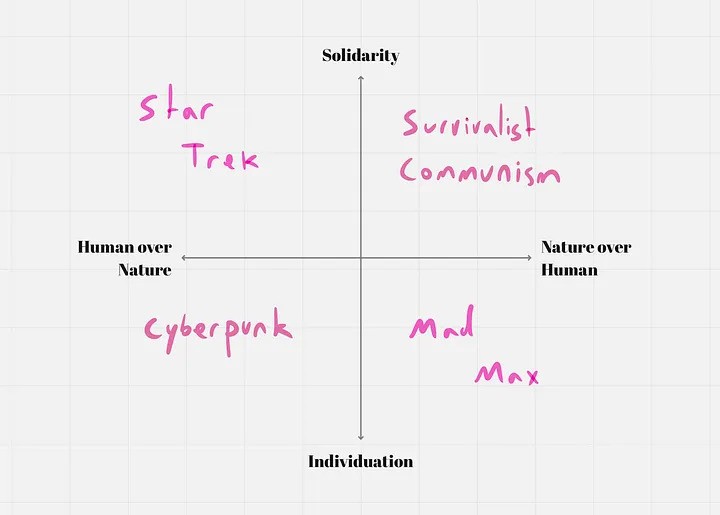
Note that the answers are never obvious. The phrasing of the questions, the two qualities at the ends of an axis, and the contents of a quadrant are all open to interpretation. So is the length of descriptions: it could be a single word or a full paragraph. A shorter definition is not necessarily better.

The above is a matrix we made in a workshop with the same axes. I was in a different mood and wrote much longer descriptions. I also imagined something completely different for the upper-right quadrant. It is just as valid.
An interesting thing usually happens in this stage; even though we purposefully chose issues about which we are uncertain, some quadrants seem to us clearly as either good or bad:
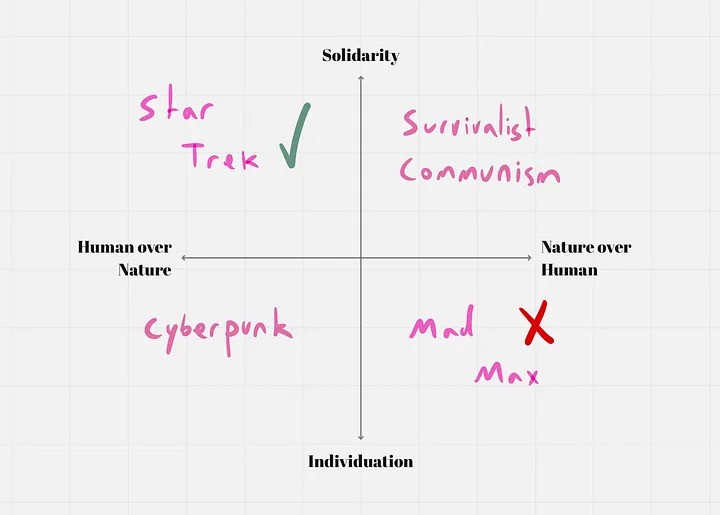
The beautiful thing about the Four Futures method, is that there will always be a quadrant or two that surprises us, that our judgement does not automatically categorize as utopian or dystopian:
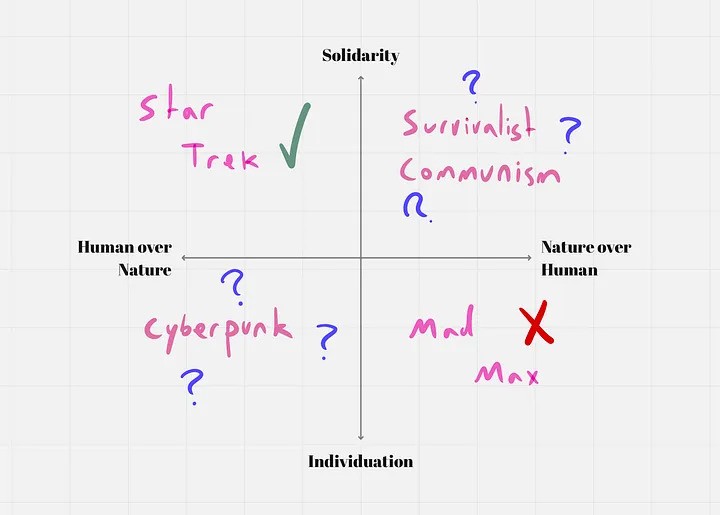
At this point in a Designing Tomorrow workshop we will tend to choose one of these unexpected quadrants, the ones we can’t judge as quickly, and flesh it out (using our other methods, like backcasting) into a future scenario that we perhaps wouldn’t have otherwise conceived.
This is what we’re aiming for when we speak about “freeing our political imagination” in our project.